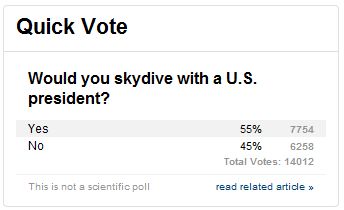
I have never seen a UFO, at least not to my knowledge. I’ve seen things in the night sky I couldn’t immediately identify, but were very likely planes, satellites, meteors or kids up to shenanigans.
These days, UFOs (Unidentified Flying Objects) are often called UAPs because the term is more encompassing: Unidentified Aerial Phenomena. It doesn’t assume conventional flight (or flight at all), or that the phenomena is an actual, physical object, but it still admits you can’t identify it.
Even though they sound more scientific, I have also never seen a UAP.
But lots of people have. In recent years, there have been so many UAP reports that they are now almost commonplace. They are discussed in the bodies of the U.S. government by credible and serious people who are not dismissed as lunatics. There are more photos and video you can shake a UFS (Unidentified Flying Stick) at. Even Mick West1Look him up. He’s an anti-conspiracy theorist, former video game designer and skeptic, but he’s also smart and fair. He has a website and, of course, a YouTube channel. probably can’t debunk all of them. Probably. (And let’s not even touch on how much of this stuff going forward is going to be a slurry of “AI”-generated nonsense. “It’s a real UAP, I swear. I don’t know why there’s a DALL-E watermark!”)
Some theorize that all this activity is to get the masses used to the idea of UAPs and all that may come with them, in preparation for…something. Probably not a giant spacecraft landing on the White House lawn, though it would honestly be hilarious if some other intelligence actually played into the trope. It’d be a great way to break the intergalactic ice, assuming they weren’t here to enslave and/or eat us.
It’s more likely that if these beings–whatever they might be, and assuming they are, in fact, real, would be preparing us for some sort of reveal that would make their presence among us undeniable. I’m not sure how this could be done in a subtle, yet convincing way. I actually read a book about this years ago, A.D. After Disclosure (links to my review way back in the olden times of 2012) and the various scenarios depicted in that book are, I think, accurate: We, as humans, would not react well. Right now, there is intelligent life in the universe, and it is us (insert joke about intelligence here). And if we never find any other intelligence, it means we are all alone–but also on top! No one is better than us, technology-wise, or society-wise, or evolution-wise. We’re #1. But as soon as another intelligence is confirmed, that changes abruptly and permanently. We would adapt, of course, but there would be a period of social chaos that would probably be unlike anything we’ve seen in human history as we re-orient ourselves as a species next to…whatever is sharing the universe with us.
All of this is to say that I am curious to see how all this UAP jazz plays out. On the one hand, definitive proof of other intelligent life would be very cool and spiffy. On the other hand, social chaos and all the mess afterwards would be…less so.
If anything zany happens, I’ll update this post, assuming the worlds isn’t cast into permanent upheaval, and I’m not living in a cave in the mountains or something. I would probably not have good Wi-Fi there.


